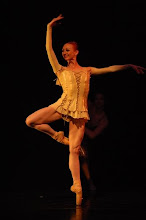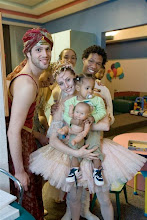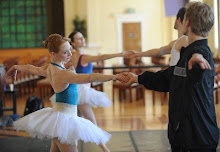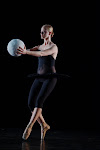 A young girl named Clara believes that magic can happen, that she has the capacity to help turn the tide in a struggle for the better, and that she can help others experience beauty. Clara does what all of us can do in our own brief lives: She expands her experience of her first supportive and loving community—her family—to a larger gathering, and to a greater good, helping someone in need, and celebrating with people from around the world, each in their own cultural vocabulary.
A young girl named Clara believes that magic can happen, that she has the capacity to help turn the tide in a struggle for the better, and that she can help others experience beauty. Clara does what all of us can do in our own brief lives: She expands her experience of her first supportive and loving community—her family—to a larger gathering, and to a greater good, helping someone in need, and celebrating with people from around the world, each in their own cultural vocabulary.For me, the Nutcracker invokes a deeper, more profound way of thinking. For example, I have long thought that the collective community of the Kingdom of Sweets is similar to the League of Nations, the forerunner to the United Nations. I also believe that the reason we, as humans, are distinguished from other living creatures is the capability to care about people we do not know. This Nutcracker ballet is an apt metaphor for what we believe in as people living in nations aspiring toward democratic principles in which people yearn for a better life and a kinder world.
I believe Nutcracker, with dancers deeply committed to their art form, its rigorous training and nearly impossible technical demands, speaks to a deep human longing for being better, to grow through struggle and hard work, to commit and give daily to others, not just in our families and workplaces, but in our communities and in our world.
It is the mysterious godfather Drosselmeier who arranges Clara's journey, an adult helping a child through the mysteries, struggles and accomplishments that will be hers. Drosselmeier is an adult who gives Clara something quite priceless, and as human beings and artists we are called to offer the priceless yet enriching mysteries as well.
Giving occurs throughout the Nutcracker story to lay the foundation for Clara’s transformative dream. A party with gifts is given; so is loving discipline when Fritz becomes greedy and jealous. A young teenage boy gives a shy girl a rose, a symbol of life and beauty. Good food and drink are generously distributed.
There is glorious pleasure for me as artistic director of Ballet Memphis as we produce and explore all season long the infinite possibilities of creating art through dance. On the stages where Ballet Memphis performs, we continue to quietly and profoundly express our belief that we can work together to be better and to share our gifts with you.
At our Ballet Memphis School, it is our honor to train children from all over the area in an atmosphere that nurtures trust, and provides the ability to quietly and sincerely begin listening to your body and soul. At our Pilates Centre, our licensed instructors help strengthen and heal bodies.
On this stage, and others across the nation, a desire to be captivated by beauty, dance and music as demonstrated by a nonspeaking art form takes place every December. It will forever be my hope that someday, this world on the stage will be the world we will walk in every day of our lives.

















